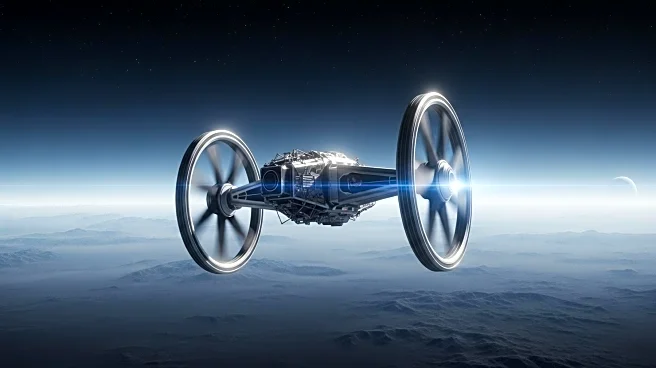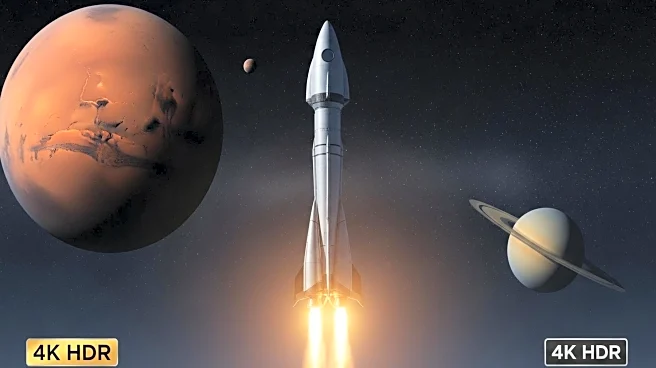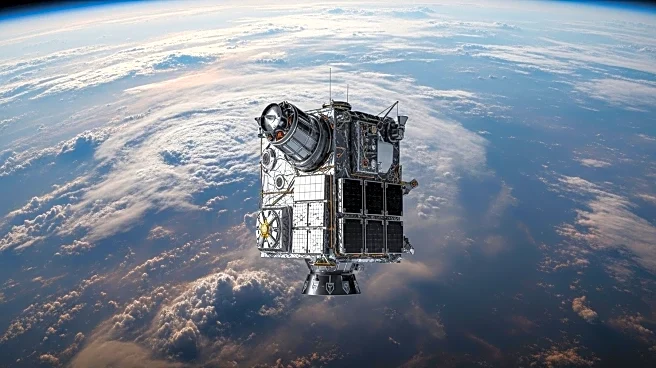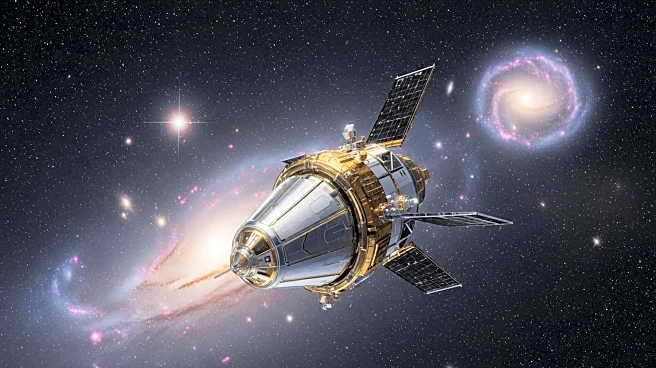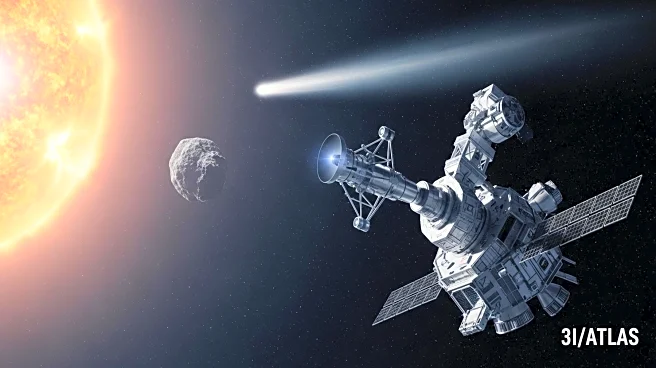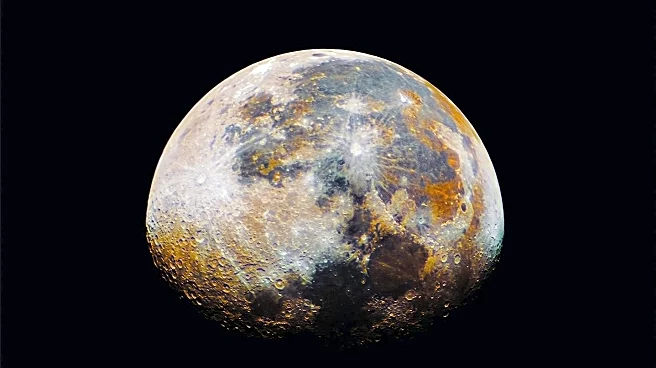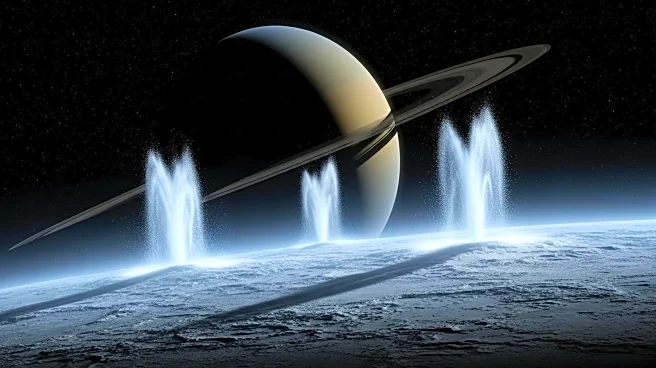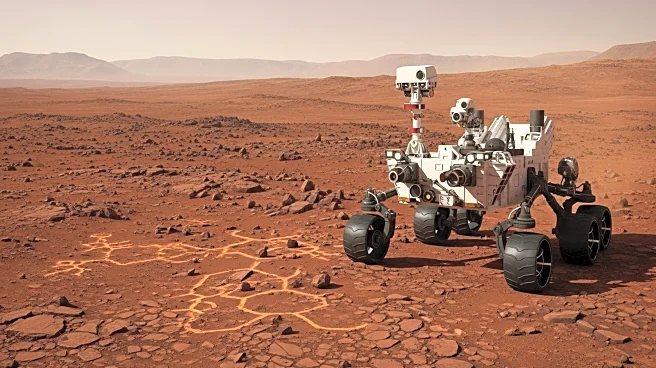What is the story about?
What's Happening?
Scientists have discovered that Titan, Saturn's largest moon, has an atmosphere that behaves like a gyroscope, shifting its tilt with the seasons. This finding was made by researchers at the University of Bristol using data from the Cassini-Huygens mission. Titan's atmosphere does not rotate in unison with its surface but oscillates, possibly due to a past event that knocked it off its spin axis. The study, led by Lucy Wright, reveals that the tilt changes with Titan's seasons, which span nearly 30 Earth years. This discovery challenges previous assumptions about Titan's atmospheric dynamics and introduces new mysteries about the forces influencing it.
Why It's Important?
The discovery of Titan's atmospheric behavior is crucial for NASA's upcoming Dragonfly mission, set to explore Titan in the 2030s. Dragonfly, a drone-like rotorcraft, will need precise atmospheric data to navigate and land safely on Titan's surface. The fast-moving winds on Titan, which are significantly faster than its surface rotation, will affect the mission's landing trajectory. The research provides essential insights for engineers to predict Dragonfly's landing site, enhancing the mission's success. This study exemplifies how past mission data, like that from Cassini, can shape future space exploration strategies.
What's Next?
NASA's Dragonfly mission will incorporate the findings from this study to refine its landing trajectory calculations. As the mission progresses, scientists will continue to analyze Titan's atmospheric dynamics to ensure the rotorcraft can safely navigate the moon's surface. The research opens new avenues for understanding atmospheric physics, prompting further exploration of similar phenomena on other celestial bodies. The study encourages scientists to revisit existing models and explore the broader implications of atmospheric behavior across the Solar System.
Beyond the Headlines
Titan's atmospheric dynamics present broader implications for atmospheric science, challenging existing models and encouraging exploration of similar phenomena on other planets and moons. The notion that Titan's atmosphere acts like a spinning top disconnected from its surface prompts fascinating questions for scientists. It serves as a reminder that despite its Earth-like appearance, Titan remains an alien world with its own climate systems and hidden mysteries. The discovery opens new avenues for research and exploration in planetary science.
AI Generated Content
Do you find this article useful?
